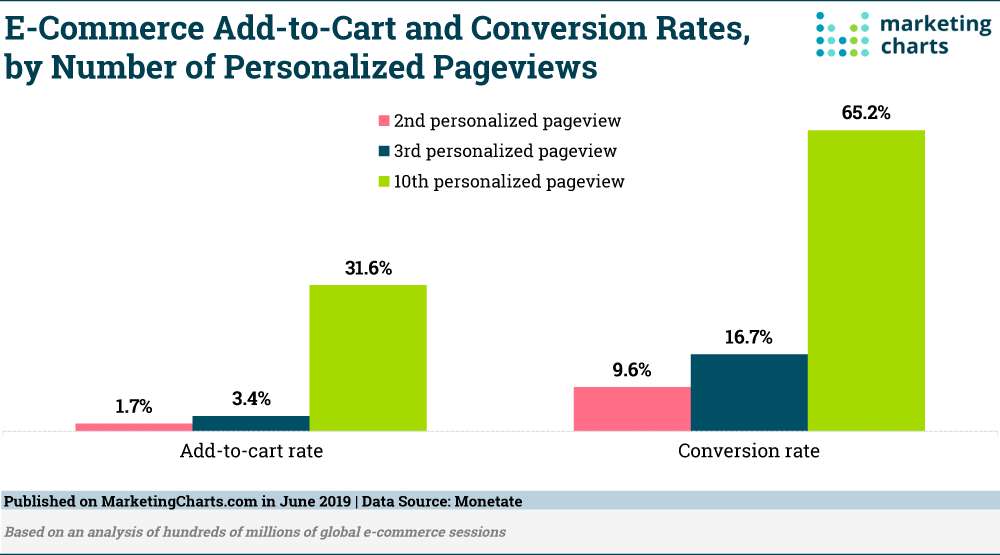It’s no secret that a successful business organization is built upon powerful marketing strategies. But implementing a successful strategy requires you to consider several factors that foray into the digital and web-based markets, with aspects such as social media presence, paid advertisements, and community engagement playing key roles in marketing success. Amongst these, an often overlooked factor that has a similarly significant impact is website personalization.
Website personalization is a strategy that can result in a noticeable increase in customer engagement, conversions, and brand loyalty. This happens because you offer users a unique experience through the website’s personalization tools, though note that to do this, its important to have information about your users’ preferences and browser behavior.
There are several parts of your website to implement this personalization, and it can feel overwhelming when starting out. But below, we’ll go over some of the best website personalization ideas and examples to help you visualize how you can take advantage of this key aspect of user engagement.
What is website personalization?
Website personalization is a strategy that will allow you to create a unique experience for each visitor, satisfying their needs. Since you will target customers according to their behaviour, you will need data that helps you determine which products or promotions might interest them.

Benefits of website personalization
With the website personalization ideas we will present below, you can bring endless benefits to your company. Let’s take a look at some of them.
Customer engagement
You can boost your customer engagement using website personalization tools since you will offer your website’s visitors targeted content relevant to their interests and purposes. Plus, you will be able to generate more leads and accelerate the purchasing experience for any user.
Build loyalty
With all the data you gather from the website personalization tools, you can create a unique marketing experience. That will allow you to build brand loyalty, even with new customers. To get more information, you can even acquire an identity management tool.
More conversions
If you understand what your clients are looking for, you will know how to construct more effective strategies. Using things such as audience insights reports, you can understand the preferences of all clients. That way, you can show them what they want. In the long run, this will increase your conversions.

Personalized notifications
Remember that website personalization does not stop there since you need to keep in touch with your customers. For instance, you can send emails to all customers offering promotions on items they already bought. Plus, you can also use this to market all the new articles in your store.
Website Personalization Ideas
Now that we’ve answered “what is website personalization,” your next question might be “What are some examples?” So we’ve compiled a list of specific examples that some entities are using to build their web platforms. Take a look to see what you might be able to make use of for your own website personalization.
Show recognition for loyalty
Your users need to feel like they’re a welcome and essential part of your organization. A straightforward way of conveying this is to greet returning customers with a standard greeting and a returnee benefit, such as a discount coupon or a free sample of your digital products. This makes users feel valued as individuals and increases goodwill and brand loyalty, and is used across countless platforms as an effective engagement tool.
Make suggestions
If you already know the browser behaviour of your customers, you can use this data to suggest products based on their buying cycle. Suggesting content or products that are similar to those they’ve already viewed or purchased on your platform can increase convenience as well as the size and number of conversions you receive. A good personalization website example is a platform like Amazon, which provides excellent suggested content through their “related to items you’ve viewed” sections.

Customize testimonials
When you are a big company, chances are you offer different services to your customers. For example, let’s say some of them purchase a social media marketing package while others pick an SEO one. Instead of showing them general testimonials, you can classify the users and divide the reviews. That way, clients will only see information regarding their interests.
Unique experience
Companies such as Stitch Fix have become masters when it comes to personalizing the experience of their users. For example, this clothing store collects the information of all users through a series of questions and compares it to the data they already have. As a result, the client will receive hand-picked items that will match their style. Creating your own unique experience can be a great way to make your platform stand out from competitors and remain memorable for your users.

Tailoring to their needs
When customers arrive at your landing page, it’s necessary to help them quickly find the content they want. However, users can soon decide to end their session with you if your interface is too complicated or hard to navigate. To resolve this, ensure your website is designed for optimal, intuitive usage and provides essential information in short, easy-to-understand segments. For example, list categories of content you have available in a noticeable, neat format so users can quickly access what they’re looking for.
Storing their progress
If you are looking for the best website personalization examples, you should visit Hulu or Spotify’s platforms for some of the best. Their programs and web platforms will store progress through a selected series and notify users when new episodes or songs are available. In a similar vein, compiling your content offerings into categories and series and offering them as a set can increase the amount of time your users spend engaging with your platform and encourage them to come back and pick up where they left off.
Different background image
To sell your services to a specific client, you need to show them you care. The good news is that you can do this just using a different background image that resonates with their products. For instance, use sports-related visuals for posts, articles, and other media related to
Showing live chat
Even though many companies have a live chat available to all users, a better strategy is choosing which clients could need it. What does that mean? The purpose will be to identify high-value customers that are more likely to make a conversion. That way, your team can have more personal conversions that will increase your sales.
With all the website personalization ideas that we have explained above, we are sure that you will notice a boost in your customer loyalty in no time. If you’re looking for more ways to use website personalization to spruce up your platform, check out Viafoura’s array of online community engagement solutions to see how we can help.





